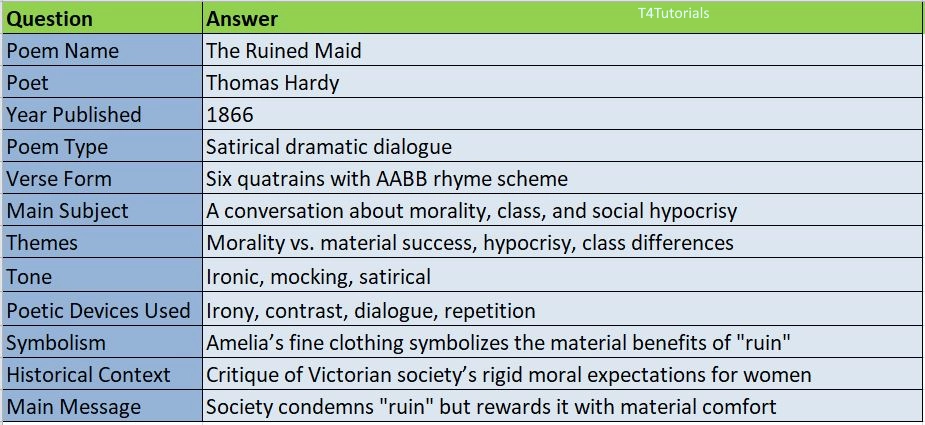Summary:
Thomas Hardy’s The Ruined Maid is a satirical poem that explores Victorian attitudes toward morality, class, and social status. The poem is written as a dialogue between two women who meet in town. One of them, Amelia, has become “ruined,” implying that she has engaged in a morally questionable lifestyle, likely as a mistress or prostitute. Despite her “ruined” status, she appears well-dressed, financially comfortable, and confident, contrasting with her old rural friend, who remains poor and struggles to survive. The poem critiques the hypocrisy of society, where “ruin” is condemned but also leads to material success. Hardy uses irony and contrast to highlight the rigid and unjust moral standards of the time.

Score: 0
Attempted: 0/10
Subscribe
| Question | Answer |
| Poem Name | The Ruined Maid |
| Poet | Thomas Hardy |
| Year Published | 1866 |
| Poem Type | Satirical dramatic dialogue |
| Verse Form | Six quatrains with AABB rhyme scheme |
| Main Subject | A conversation about morality, class, and social hypocrisy |
| Themes | Morality vs. material success, hypocrisy, class differences |
| Tone | Ironic, mocking, satirical |
| Poetic Devices Used | Irony, contrast, dialogue, repetition |
| Symbolism | Amelia’s fine clothing symbolizes the material benefits of “ruin” |
| Historical Context | Critique of Victorian society’s rigid moral expectations for women |
| Main Message | Society condemns “ruin” but rewards it with material comfort |